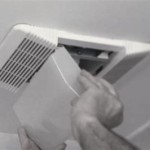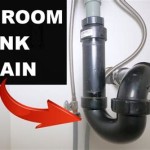Can You Hook Up Two Bathroom Fans to One Vent?
The question of connecting two bathroom exhaust fans to a single ventilation duct is a common one for homeowners undertaking renovations or new construction. The apparent simplicity of such a setup often masks underlying complexities related to airflow, backdrafting, code compliance, and overall system efficiency. While technically feasible, connecting multiple bathroom fans to a single vent requires careful consideration of several factors to ensure proper functionality and prevent potential problems.
The primary purpose of a bathroom exhaust fan is to remove moisture and odors from the room, preventing mold growth and maintaining air quality. Each bathroom fan is typically designed to exhaust a specific volume of air, measured in cubic feet per minute (CFM). This CFM rating is determined by the size of the bathroom and the expected level of moisture generation. Connecting two fans to a single vent can, under the right circumstances, seem like a convenient way to simplify ductwork and save space. However, the implications of this decision can have significant consequences if not addressed properly.
The challenge lies in ensuring that each fan operates effectively without impeding the performance of the other. Backdrafting, where one fan pushes air back into the other bathroom when both are not operating simultaneously, is a major concern. This can lead to moisture and odor transfer between bathrooms, negating the intended benefits of the ventilation system. Adequate duct sizing and the implementation of backdraft dampers are crucial to mitigating this risk.
Furthermore, building codes and regulations often dictate specific requirements for bathroom ventilation systems. These codes are designed to ensure proper air exchange and prevent health and safety hazards. Understanding and adhering to these regulations is paramount when considering a multiple-fan single-vent configuration.
Key Considerations Before Connecting Two Fans
Before proceeding with connecting two bathroom fans to a single vent, a thorough assessment of several critical factors is essential. Failing to address these considerations can result in a poorly functioning system that causes more problems than it solves.
Calculating Total CFM Requirements: The first step is to determine the total CFM required for both bathrooms. This involves calculating the individual CFM needs for each bathroom based on its size, fixture count (shower, toilet, etc.), and usage patterns. The total CFM for the combined system must be adequately accommodated by the chosen duct size and the combined output of the two fans. Underestimating the CFM requirements will result in inadequate ventilation and potential moisture buildup.
Industry standards generally recommend at least 50 CFM for bathrooms under 50 square feet and 1 CFM per square foot for larger bathrooms. Bathrooms with features like jetted tubs or steam showers will require significantly higher CFM ratings. It is important to err on the side of caution when calculating CFM requirements to ensure sufficient ventilation under all conditions.
Duct Sizing and Material: The size of the ductwork is critical to ensuring efficient airflow. A duct that is too small will restrict airflow, reducing the effectiveness of the fans and potentially causing them to overheat. A duct that is too large may result in stagnant air and reduced air velocity. The duct size should be calculated based on the total CFM of both fans, the length of the duct run, and the number of bends and elbows in the system.
Smooth, rigid ductwork is generally preferred over flexible ductwork, as it offers less resistance to airflow. Flexible ductwork can create significant pressure drops due to its corrugated interior. If flexible ductwork is used, it should be kept as short and straight as possible. The duct material should also be selected for its durability and resistance to moisture and mold growth.
Backdraft Dampers and Fan Selection: Backdraft dampers are essential components in a multi-fan single-vent system. These dampers prevent air from flowing backward through the ductwork when one fan is not operating. Each fan should be equipped with a backdraft damper located as close to the fan as possible. These dampers should be of high quality and designed to operate reliably with minimal resistance to airflow.
The choice of bathroom fans is also crucial. Fans with built-in backdraft dampers are preferred. Select fans with sufficient CFM ratings to meet the ventilation needs of each bathroom. Consider fans with quiet operation to minimize noise pollution. Energy efficiency is another important factor, as bathroom fans can run for extended periods.
Potential Problems and Solutions
Connecting two bathroom fans to a single vent introduces several potential problems that must be addressed to ensure the system operates effectively and efficiently.
Backdrafting and Airflow Imbalance: Backdrafting is the most common problem encountered in these systems. When one fan is not running, air from the other fan can be forced back into the inactive bathroom. This can lead to moisture and odor transfer, as well as reduced ventilation effectiveness. Using high-quality backdraft dampers on each fan is the primary solution to this problem. Regularly inspect the dampers to ensure they are functioning correctly and are free from debris.
Another potential issue is airflow imbalance, where one fan dominates the system and restricts airflow from the other fan. This can occur due to variations in duct length, bends, or fan performance. Careful duct design and fan selection can minimize this problem. Consider using fans with similar CFM ratings and ensuring that the duct runs are as symmetrical as possible.
Increased Noise Levels: Combining the noise from two bathroom fans into a single duct can increase the overall noise level in the system. Choose fans with low sone ratings to minimize noise pollution. Consider installing sound-dampening materials around the ductwork to further reduce noise transmission.
Code Compliance and Inspections: Building codes and regulations often specify requirements for bathroom ventilation systems. It is crucial to ensure that the proposed system complies with all applicable codes before proceeding with installation. Contact the local building department to obtain information on code requirements. Schedule an inspection after installation to ensure that the system is functioning correctly and meets all code standards.
Alternative Ventilation Strategies
If the complexities and potential problems associated with connecting two bathroom fans to a single vent seem daunting, consider alternative ventilation strategies. These alternatives may offer simpler and more reliable solutions.
Individual Ventilation Systems: The simplest and most reliable solution is to install separate ventilation systems for each bathroom. This involves running dedicated ductwork from each fan to an exterior vent. This approach eliminates the risk of backdrafting and airflow imbalance, ensuring that each bathroom is adequately ventilated. While it may require more extensive ductwork, it offers the most reliable and trouble-free performance.
Single, High-Capacity Fan: Another option is to install a single, high-capacity fan that is capable of ventilating both bathrooms. This approach requires careful consideration of duct sizing and fan placement to ensure that both bathrooms receive adequate airflow. A centrally located fan with multiple duct branches can be effective, but it is crucial to balance the system to ensure that air is drawn evenly from both bathrooms. This system still requires backdraft dampers at each bathroom inlet.
Heat Recovery Ventilators (HRV) or Energy Recovery Ventilators (ERV): For whole-house ventilation, consider installing an HRV or ERV system. These systems provide continuous ventilation throughout the house, including bathrooms. HRVs and ERVs exchange stale indoor air with fresh outdoor air, recovering heat (HRV) or both heat and moisture (ERV) in the process. This can improve indoor air quality and reduce energy consumption.
Ultimately, the decision of whether to connect two bathroom fans to a single vent depends on a variety of factors, including the size and layout of the bathrooms, the complexity of the ductwork, and the applicable building codes. Careful planning, proper duct sizing, and the use of backdraft dampers are essential for ensuring a safe and effective system. If in doubt, consult with a qualified HVAC professional to determine the best ventilation strategy for your specific situation.

How To Use An In Line Exhaust Fan Vent Two Bathrooms Diy Family Handyman

Bathroom Exhaust Fans Building America Solution Center

Bathroom Exhaust Fan Guide The Home Depot

What Extractor Fan Do I Need For My Bathroom Blog World

Bathroom Exhaust Fan Guide The Home Depot
Kitchen Bath Venting With Air Admittance Valves Jlc

Home Electrical Wiring Bathroom Exhaust Fan

Bathroom Exhaust Fans Types Uses Benefits And More

Whole House Ventilation Department Of Energy

2024 Cost To Install Bathroom Fan Angi
Related Posts







